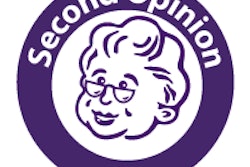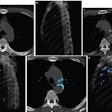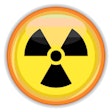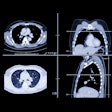A new model-based study of National Lung Screening Trial (NLST) results predicts that implementing CT lung cancer screening in the Medicare population will identify more cancers -- and at earlier, curable stages -- but the costs to Medicare will be substantial.
The new model estimates that implementing screening gradually in the Medicare population would result in approximately 54,900 more lung cancers detected over a five-year period, most of which would be early-stage disease; however, the cost would approach $10 billion.
The model represents the first analysis of NLST data to look specifically at the Medicare population. This group has a high lung cancer incidence and a large segment that qualifies for screening under guidelines approved by the U.S. Preventive Services Task Force (USPSTF).
NLST, published in 2011, showed a 20% drop in lung cancer deaths with low-dose CT (LDCT) screening versus x-ray screening in a population of more than 50,000 individuals. The findings led USPSTF to recommend annual LDCT screening for people ages 55 to 80 years with a 30-pack-year smoking history who currently smoke or who quit within the past 15 years.
"If we can diagnose lung cancers at an earlier stage, patients can be treated far more effectively and survival prognosis is much better," said lead author Joshua Roth, PhD, from Fred Hutchinson Cancer Research Center, in a statement announcing the results. "However, the key to the success of this screening program is ensuring that those who are at high risk actually undergo screening and subsequently receive appropriate treatment."
Screening eligible Medicare patients is projected to boost the proportion of early-stage diagnoses from 15% to 33%, the study team reported. On the cost side, however, five-year Medicare outlays for CT imaging, diagnostic workup, and cancer care would total $9.3 billion. This represents a $3 monthly premium increase for each Medicare member if the program sees "expected" use in 50% of screen-eligible members. In a low-use scenario (25% of eligible members), the Medicare cost would amount to $5.9 billion; in a high-use scenario (75% of eligible members), the total would reach $12.7 billion.
The study team is planning additional analyses that will assess available resources and demand for additional scanners and technologists, with the aim of helping healthcare systems prepare for the implementation of the USPSTF policy.



















